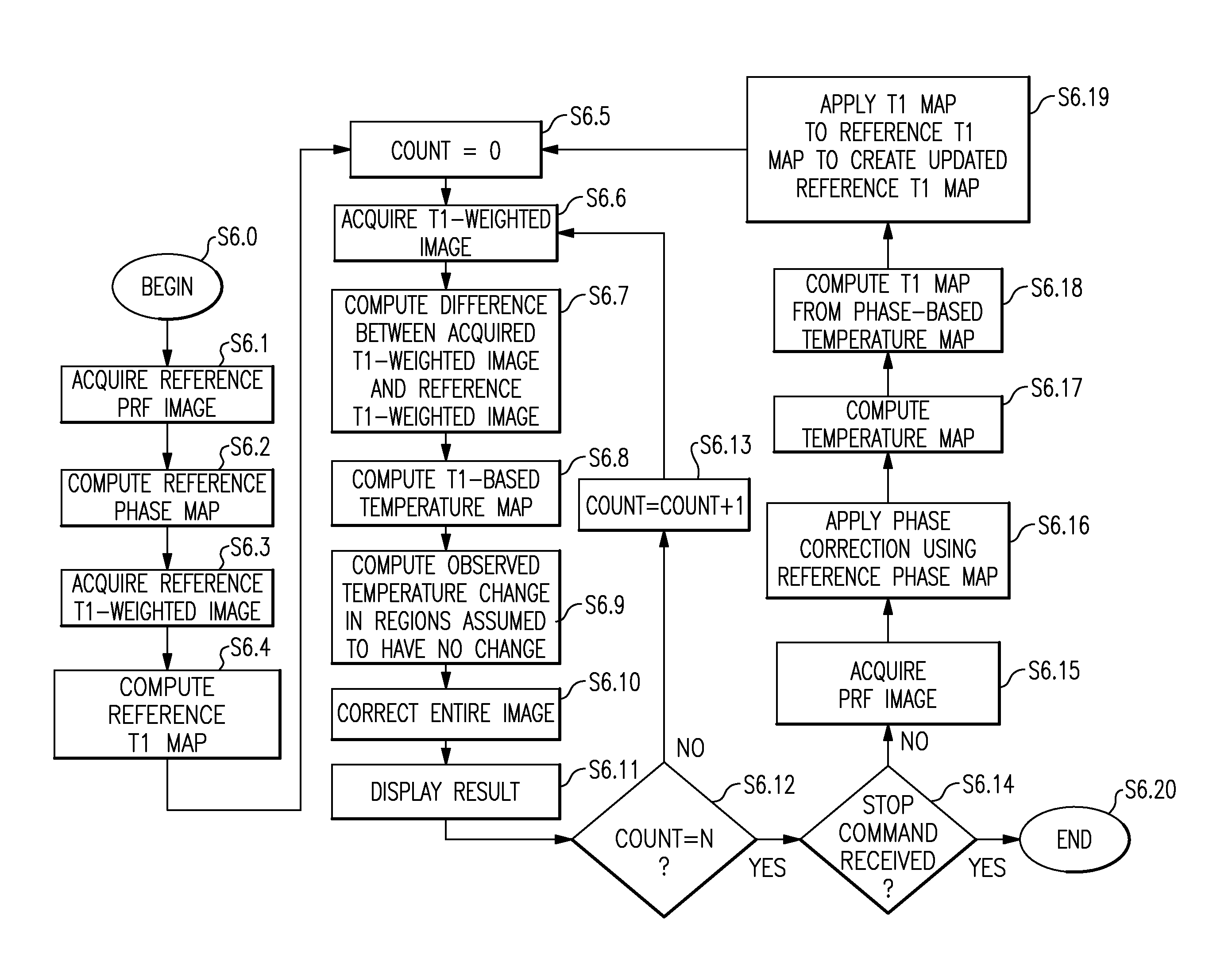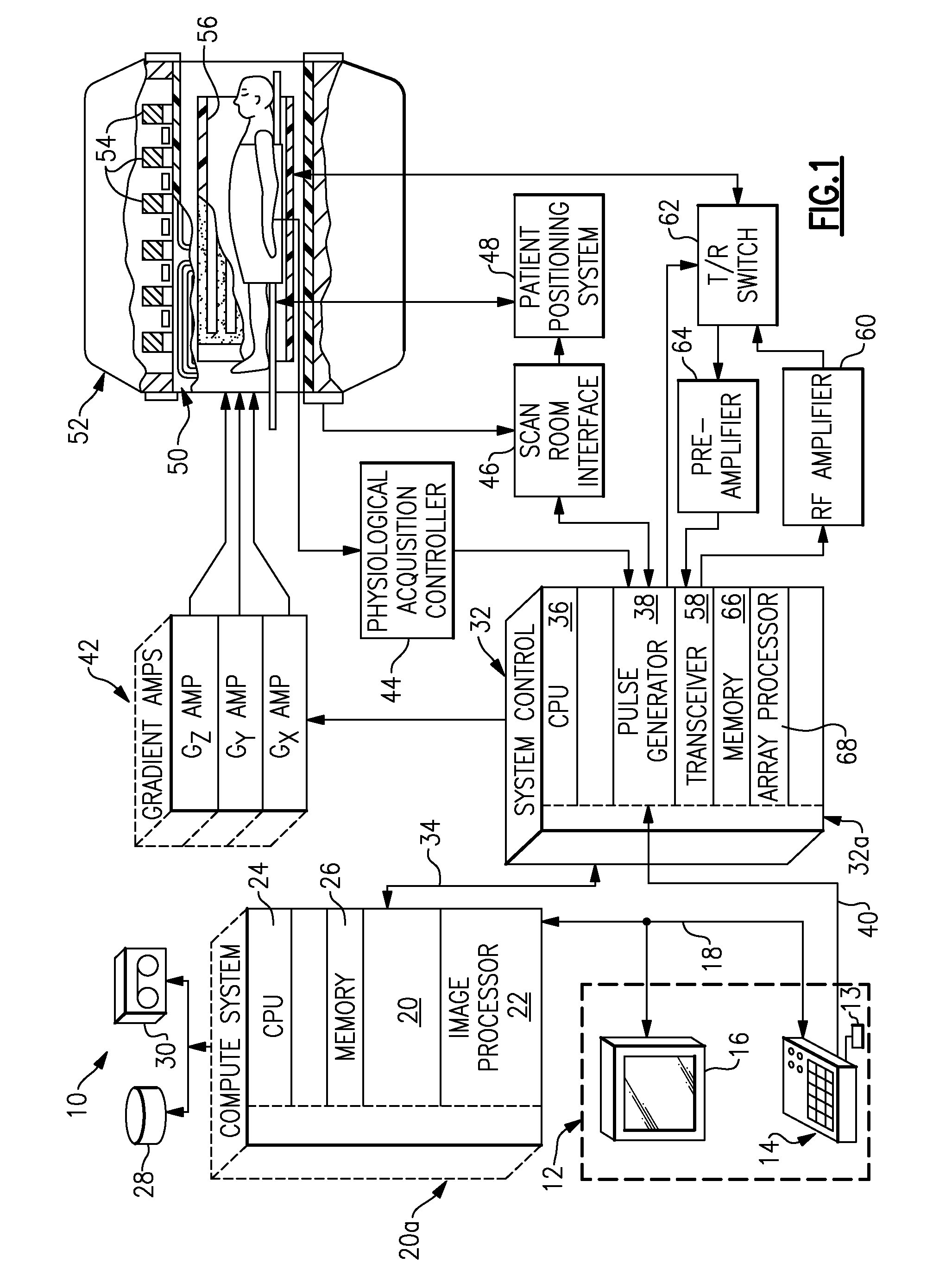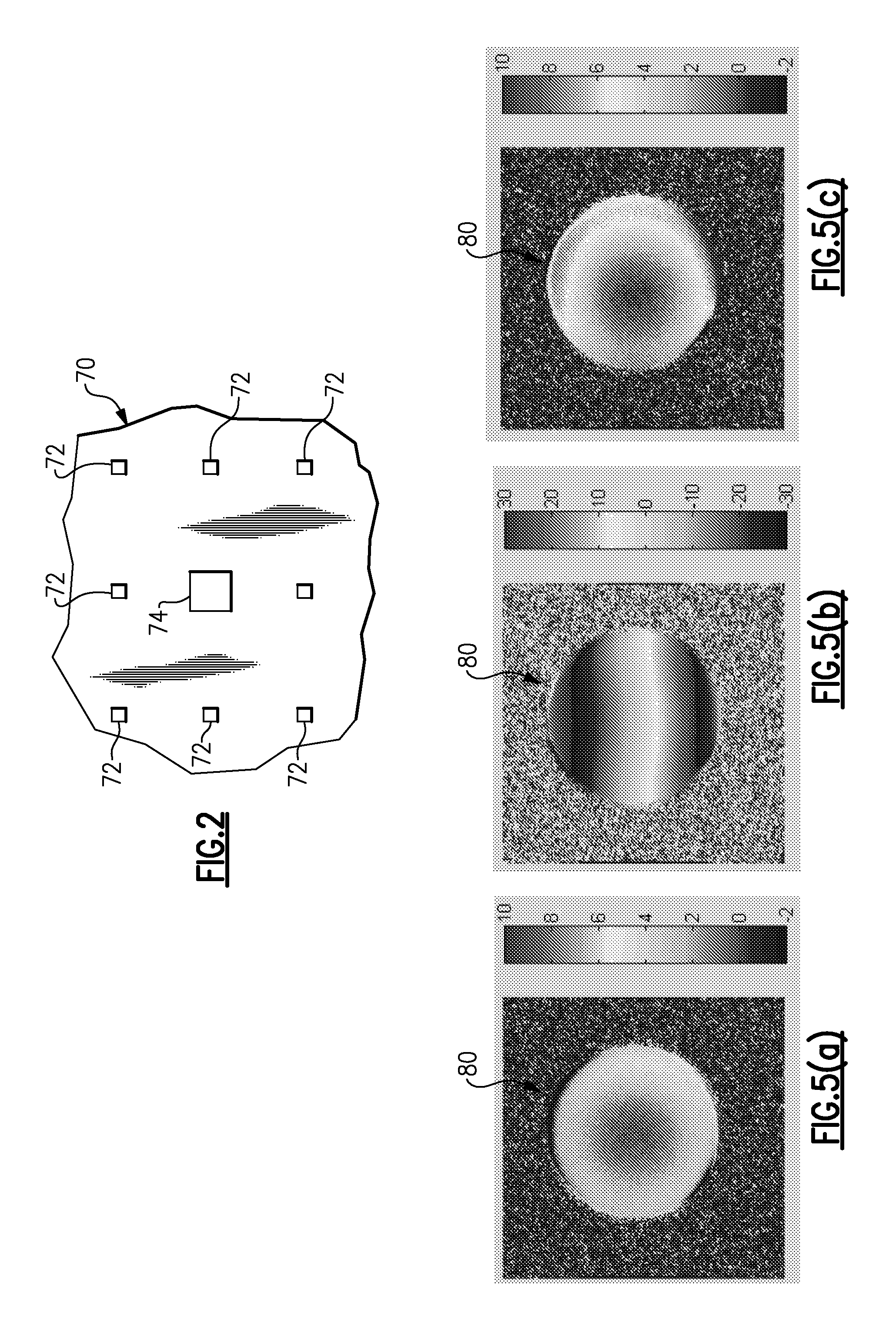T1-corrected proton resonance frequency shift thermometry
a proton resonance and frequency shift technology, applied in the field of system and method of imaging tissue using magnetic resonance imaging, can solve the problems of phase shift, inability to measure absolute prf, and tumors that cannot be obscured by blood
- Summary
- Abstract
- Description
- Claims
- Application Information
AI Technical Summary
Problems solved by technology
Method used
Image
Examples
Embodiment Construction
[0042]Referring to the drawings wherein identical reference numerals denote the same elements throughout the various views,
[0043]Referring to FIG. 1, a magnetic resonance imaging (MRI) apparatus 10 comprises a superconducting magnet system. An illustrative discussion of exemplary details of a magnetic resonance and / or magnetic resonance imaging (MRI) apparatus and / or system are presented for explanatory purposes only.
[0044]The operation of the MR apparatus is controlled from an operator console 12 which includes a keyboard or other input device 13, a control panel 14, and a display screen 16. The console 12 communicates through a link 18 with a separate computer system 20 that enables an operator to control the production and display of images on the display screen 16. The computer system 20 includes a number of modules which communicate with each other through a backplane 20a. These include an image processor module 22, a CPU module 24 and a memory module 26, known in the art as a ...
PUM
 Login to View More
Login to View More Abstract
Description
Claims
Application Information
 Login to View More
Login to View More - R&D
- Intellectual Property
- Life Sciences
- Materials
- Tech Scout
- Unparalleled Data Quality
- Higher Quality Content
- 60% Fewer Hallucinations
Browse by: Latest US Patents, China's latest patents, Technical Efficacy Thesaurus, Application Domain, Technology Topic, Popular Technical Reports.
© 2025 PatSnap. All rights reserved.Legal|Privacy policy|Modern Slavery Act Transparency Statement|Sitemap|About US| Contact US: help@patsnap.com



